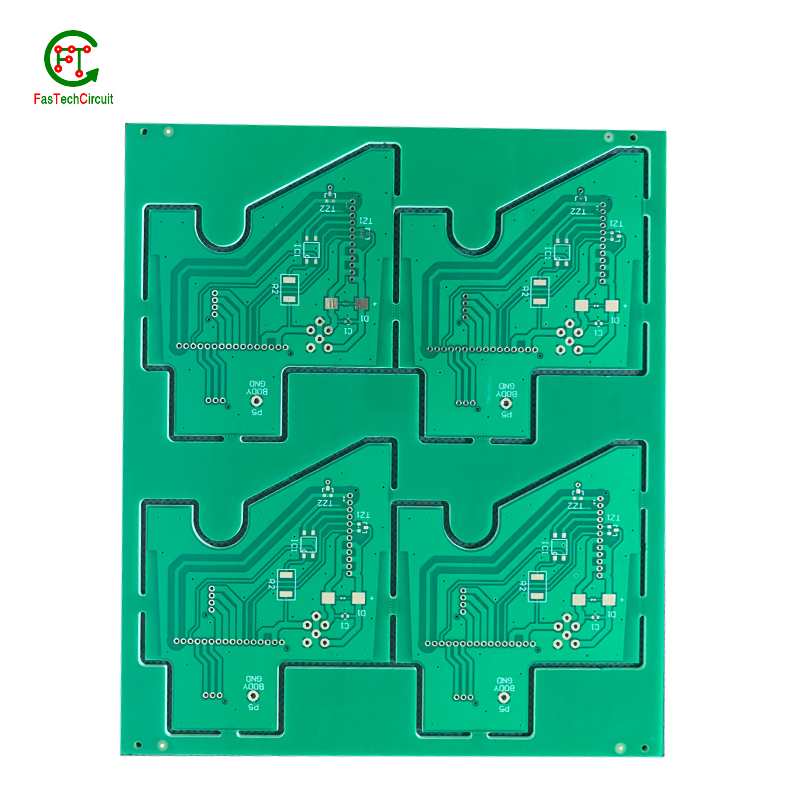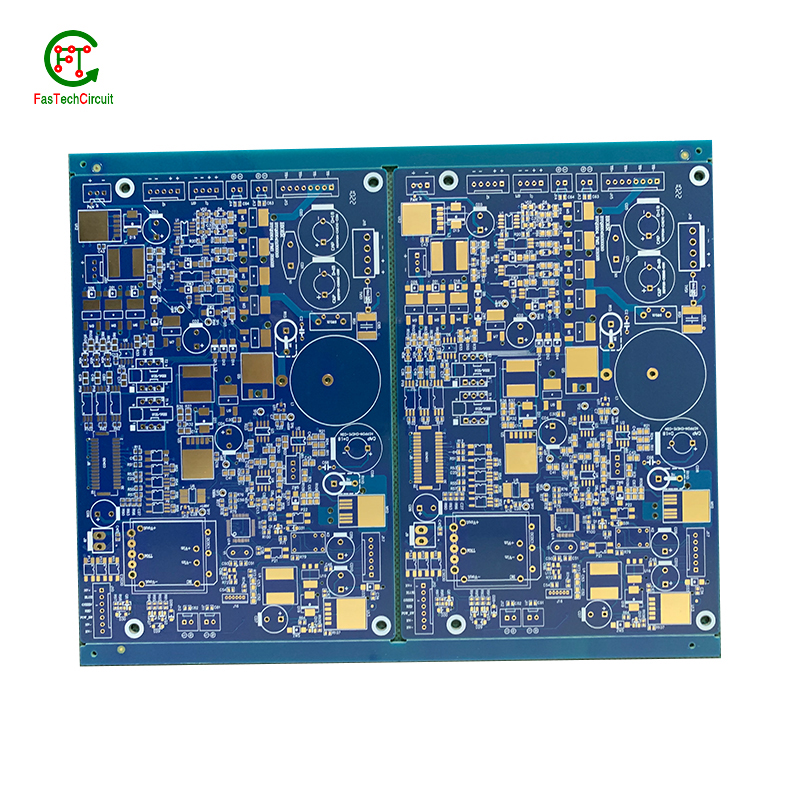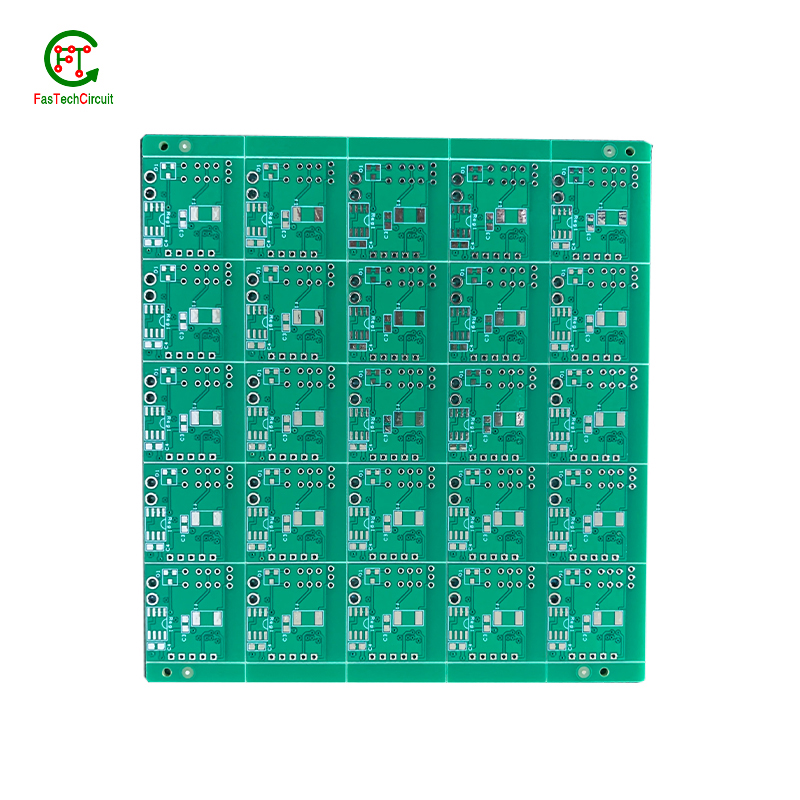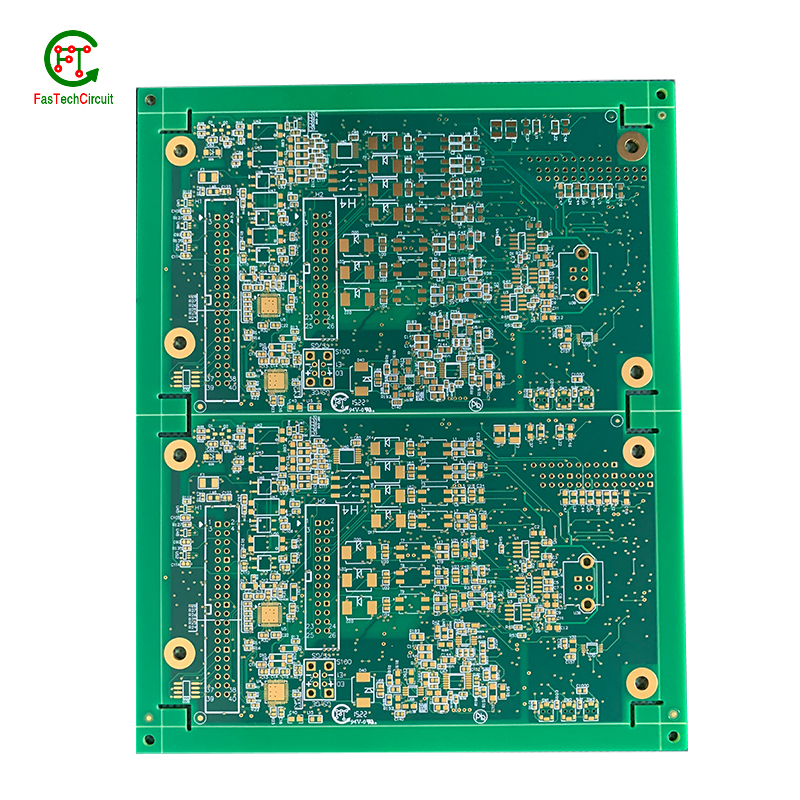What is the role of surface mount technology in PCB assembly?
The assembly process can be done manually by skilled technicians or through automated machinery. Modern PCB assembly techniques use surface mount components, where the components are placed on the surface of the PCB instead of being inserted through holes. This technique allows for smaller, lighter, and more complex circuit boards to be produced, making it more suitable for today's advanced technology.
PCB assembly is a critical step in the production of various electronic devices, including computers, smartphones, medical devices, and many more. With the increasing demand for electronic products, the PCB assembly industry continues to evolve and innovate, ensuring the efficient and effective production of high-quality electronic devices.

We understand the importance of achieving a high ROI for your project, which is why we offer cost-effective PCB assembly solutions. Our streamlined processes, efficient manufacturing, and strategic sourcing of materials help us to keep our costs affordable without compromising on quality. This way, you can rest assured that you are getting the best value for your investment with our assembly services.
Our advanced PCB assembly services are the perfect solution for achieving precise electronic integration. With state-of-the-art technology and a team of skilled technicians, we ensure the highest quality assembly for your printed circuit boards. From surface mount to through-hole components, we guarantee a flawless assembly that meets your exact specifications and exceeds your expectations.

PCB assembly is the process of preparing, placing, and soldering various electronic components onto a printed circuit board (PCB). This involves creating a complete and functional electronic system by interconnecting different components such as capacitors, resistors, integrated circuits, and connectors on a PCB. The assembly process requires precise and accurate placement of components, careful soldering techniques, and thorough quality control measures to ensure proper functioning of the final product. In this introduction, we will discuss the various stages of PCB assembly and the importance of each step in creating a reliable and efficient electronic system.
2.How are environmental regulations and sustainability considerations addressed in PCB assembly?
3.How does through-hole technology differ from surface mount technology in PCB assembly?
4.What factors should be considered when choosing a PCB assembly manufacturer?
5.How important is quality control in the production of PCB assemblies?
6.Can a PCB assembly be repaired if it gets damaged?
7.How long does it typically take to complete a PCB assembly project?
8.What are the main challenges faced in PCB assembly process?
9.How has automation and robotics impacted the PCB assembly industry?
10.What is a PCB assembly and how does it differ from traditional circuit assembly?
11.What are the major components included in a PCB assembly?
1.What is the role of surface mount technology in PCB assembly?
Surface mount technology (SMT) is a method of electronic component placement on a printed circuit board (PCB) that involves directly mounting components onto the surface of the board. This is in contrast to through-hole technology, where components are inserted into holes drilled into the board.
The role of SMT in PCB assembly is to provide a more efficient and cost-effective method of assembling electronic circuits. Some of the key benefits of SMT include:
1. Higher component density: SMT allows for smaller and more compact designs, as components can be placed closer together on the surface of the board.
2. Faster assembly: SMT components can be placed and soldered onto the board using automated machines, which speeds up the assembly process and reduces the need for manual labor.
3. Cost-effective: SMT reduces the amount of material and labor required for PCB assembly, making it a more cost-effective option for high-volume production.
4. Improved performance: SMT components have shorter lead lengths, which reduces the parasitic effects and improves the overall performance of the circuit.
5. Compatibility with modern components: Many modern electronic components are only available in surface mount packages, making SMT essential for incorporating these components into PCB designs.
Overall, the role of SMT in PCB assembly is to provide a more efficient, cost-effective, and reliable method of assembling electronic circuits. It has become the standard method of PCB assembly in the electronics industry and continues to evolve with advancements in technology.
2.How are environmental regulations and sustainability considerations addressed in PCB assembly?
Environmental regulations and sustainability considerations are addressed in PCB assembly in several ways:
1. Compliance with regulations: PCB assembly companies must comply with various environmental regulations, such as the Restriction of Hazardous Substances (RoHS) directive, which restricts the use of certain hazardous substances in electronic products. They must also adhere to regulations related to waste management, air and water pollution, and worker safety.
2. Use of environmentally friendly materials: PCB assembly companies are increasingly using environmentally friendly materials, such as lead-free solder, to reduce the environmental impact of their products. They also use materials that are recyclable and biodegradable.
3. Energy efficiency: PCB assembly companies are implementing energy-efficient practices in their manufacturing processes, such as using energy-efficient equipment and optimizing production processes to reduce energy consumption.
4. Waste reduction and recycling: PCB assembly companies have implemented waste reduction and recycling programs to minimize the amount of waste generated during the manufacturing process. This includes recycling of materials such as metals, plastics, and electronic components.
5. Sustainable packaging: PCB assembly companies are using sustainable packaging materials, such as biodegradable or recyclable materials, to reduce the environmental impact of their products.
6. Life cycle assessment: PCB assembly companies conduct life cycle assessments to evaluate the environmental impact of their products from raw material extraction to end-of-life disposal. This helps them identify areas for improvement and make more sustainable decisions.
7. Collaboration with suppliers: PCB assembly companies work closely with their suppliers to ensure that the materials and components used in their products are environmentally friendly and comply with regulations.
8. Continuous improvement: PCB assembly companies are continuously seeking ways to improve their environmental performance and sustainability practices. This includes investing in new technologies and processes that are more environmentally friendly and conducting regular audits to identify areas for improvement.
3.How does through-hole technology differ from surface mount technology in PCB assembly?
Through-hole technology and surface mount technology are two different methods of assembling electronic components onto a printed circuit board (PCB). The main difference between the two is the way in which the components are mounted onto the board.
Through-hole technology involves drilling holes into the PCB and inserting the leads of the components through the holes. The leads are then soldered onto the opposite side of the board to create a strong mechanical and electrical connection. This method is typically used for larger, heavier components such as resistors, capacitors, and connectors.
Surface mount technology, on the other hand, does not require holes to be drilled into the PCB. Instead, the components are mounted directly onto the surface of the board using solder paste and a reflow oven. This method is more suitable for smaller, lighter components such as integrated circuits, transistors, and diodes.
Some other key differences between through-hole and surface mount technology include:
1. Size and Space: Through-hole components take up more space on the PCB due to the need for holes and leads, while surface mount components are smaller and can be placed closer together, allowing for more compact designs.
2. Cost: Through-hole components are generally less expensive than surface mount components, but the cost of drilling holes and the additional labor involved in through-hole assembly can make it more expensive overall.
3. Speed: Surface mount technology is faster and more efficient than through-hole technology, as it does not require manual insertion and soldering of components.
4. Reliability: Through-hole components have a stronger mechanical connection to the PCB, making them more reliable in high-stress environments. However, surface mount components are less prone to damage during handling and shipping.
In summary, through-hole technology is better suited for larger, heavier components and applications where reliability is crucial, while surface mount technology is more suitable for smaller, lighter components and applications where speed and efficiency are important. Many modern PCBs use a combination of both through-hole and surface mount technology to take advantage of the benefits of each method.
4.What factors should be considered when choosing a PCB assembly manufacturer?
1. Quality and Reliability: The most important factor to consider is the quality and reliability of the PCB assembly manufacturer. This includes their track record, certifications, and quality control processes.
2. Experience and Expertise: It is important to choose a manufacturer with a proven track record and experience in producing PCB assemblies for your specific industry or application. They should also have a team of skilled engineers and technicians who are knowledgeable about the latest technologies and techniques.
3. Manufacturing Capabilities: The manufacturer's production capabilities should match your project requirements in terms of volume, complexity, and turnaround time. They should have the necessary equipment, facilities, and resources to handle your project efficiently.
4. Cost and Pricing: While cost should not be the only factor, it is important to consider the manufacturer's pricing structure and whether it fits within your budget. It is also important to consider the overall value and quality of their services.
5. Location and Logistics: The location of the manufacturer can impact the cost and speed of delivery. It is important to consider the proximity of the manufacturer to your location and their ability to handle shipping and logistics.
6. Communication and Customer Service: A good PCB assembly manufacturer should have clear and open communication channels and provide excellent customer service. They should be responsive to your inquiries and provide regular updates on the progress of your project.
7. Quality Control Processes: The manufacturer should have robust quality control processes in place to ensure that the final product meets your specifications and industry standards. This includes testing and inspection procedures.
8. Flexibility and Customization: Depending on your project requirements, you may need a manufacturer who can offer customized solutions and adapt to changes in design or specifications. It is important to discuss this with the manufacturer beforehand.
9. Supply Chain Management: The manufacturer should have a reliable supply chain management system in place to ensure timely delivery of components and materials. This is especially important for projects with tight deadlines.
10. Reviews and References: It is always a good idea to research the manufacturer's reputation and read reviews from previous customers. You can also ask for references and speak to other companies who have worked with the manufacturer to get their feedback and recommendations.

5.How important is quality control in the production of PCB assemblies?
Quality control is extremely important in the production of PCB assemblies. PCB assemblies are used in a wide range of electronic devices, from simple household appliances to complex medical equipment. These devices often have critical functions and any defects in the PCB assembly can lead to malfunctions or failures, which can have serious consequences.
Quality control ensures that the PCB assemblies meet the required specifications and standards, and are free from defects. This involves rigorous testing and inspection at various stages of the production process, from the initial design to the final assembly. Quality control also involves identifying and addressing any issues or defects that may arise during production, to ensure that the final product is of the highest quality.
In addition, quality control helps to prevent costly rework or recalls, which can have a significant impact on the production schedule and budget. It also helps to maintain the reputation of the manufacturer and build trust with customers, as they can be confident in the reliability and performance of the PCB assemblies.
Overall, quality control is crucial in the production of PCB assemblies to ensure that they meet the required standards and function properly, which ultimately leads to customer satisfaction and the success of the product.
6.Can a PCB assembly be repaired if it gets damaged?
Yes, a PCB assembly can be repaired if it gets damaged. The extent of the damage and the availability of replacement components will determine the feasibility and cost of the repair. In some cases, it may be more cost-effective to replace the entire PCB assembly rather than attempting to repair it. However, if the damage is minor and the necessary components are readily available, a skilled technician can repair the PCB assembly.
7.How long does it typically take to complete a PCB assembly project?
The time it takes to complete a PCB assembly project can vary depending on the complexity of the project, the number of components, and the availability of materials. However, on average, a PCB assembly project can take anywhere from 1-4 weeks to complete. This includes the time for ordering materials, PCB fabrication, component placement, soldering, testing, and final inspection. Some projects may take longer if there are any design changes or if there are delays in receiving materials. It is important to communicate with your PCB assembly provider to get a more accurate timeline for your specific project.
8.What are the main challenges faced in PCB assembly process?
1. Component Placement: One of the main challenges in PCB assembly is accurately placing the components on the board. This requires precision and can be time-consuming, especially for complex designs with a large number of components.
2. Soldering: Soldering is a critical step in the PCB assembly process and requires skilled technicians to ensure proper connections and avoid defects such as cold joints or solder bridges.
3. Component Compatibility: Ensuring that all components are compatible with each other and the PCB design is crucial. Any mismatch can lead to malfunctioning or failure of the circuit.
4. Quality Control: Maintaining quality control throughout the assembly process is essential to ensure the final product meets the required standards. This includes checking for defects, proper component placement, and soldering.
5. Miniaturization: With the increasing demand for smaller and more compact electronic devices, PCB assembly is becoming more challenging due to the need for smaller components and tighter spacing between them.
6. Thermal Management: As electronic devices become more powerful, managing heat dissipation becomes a significant challenge in PCB assembly. Improper thermal management can lead to component failure and reduced lifespan of the device.
7. Design Changes: Changes in the PCB design during the assembly process can cause delays and increase costs. It is essential to have a well-defined and finalized design before starting the assembly process.
8. Lead-Free Soldering: The use of lead-free soldering has become a standard in many countries due to environmental concerns. However, lead-free soldering requires higher temperatures and can be more challenging to work with, leading to increased defects.
9. Component Counterfeiting: The rise of counterfeit electronic components in the market poses a significant challenge in PCB assembly. These components can be of poor quality and lead to product failure, making it crucial to source components from reliable suppliers.
10. Cost and Time Constraints: PCB assembly can be a time-consuming and costly process, especially for complex designs. Meeting tight deadlines and keeping costs under control can be a significant challenge for manufacturers.

9.How has automation and robotics impacted the PCB assembly industry?
1. Increased Efficiency and Productivity: Automation and robotics have greatly increased the speed and accuracy of PCB assembly processes. This has led to a significant increase in efficiency and productivity, as machines can work faster and longer without breaks or errors.
2. Improved Quality Control: With automation and robotics, the chances of human error in PCB assembly are greatly reduced. This results in higher quality products and fewer defects, leading to improved customer satisfaction and reduced costs for rework or repairs.
3. Cost Savings: Automation and robotics have reduced the need for manual labor in PCB assembly, resulting in cost savings for manufacturers. This is especially beneficial for high-volume production, as machines can work continuously without the need for breaks or overtime pay.
4. Flexibility and Customization: Automated PCB assembly machines can be programmed to handle a wide range of components and PCB designs, making it easier to produce customized or complex PCBs. This flexibility allows manufacturers to meet the demands of a diverse customer base.
5. Reduced Lead Times: With automation and robotics, the time required for PCB assembly is significantly reduced. This allows manufacturers to meet tight deadlines and deliver products to customers faster, improving their competitiveness in the market.
6. Safer Working Environment: PCB assembly involves handling hazardous materials and working with high temperatures and precision tools. Automation and robotics have reduced the need for human involvement in these processes, making the working environment safer for employees.
7. Integration with Industry 4.0: Automation and robotics have enabled the integration of PCB assembly processes with Industry 4.0 technologies such as data analytics, artificial intelligence, and the Internet of Things. This allows for real-time monitoring and optimization of production processes, leading to further improvements in efficiency and quality.
10.What is a PCB assembly and how does it differ from traditional circuit assembly?
A PCB (Printed Circuit Board) assembly is the process of attaching electronic components to a printed circuit board in order to create a functional electronic circuit. This process involves soldering or other methods of attaching the components to the board, as well as testing and inspection to ensure proper functionality.
The main difference between PCB assembly and traditional circuit assembly is the use of a printed circuit board. In traditional circuit assembly, the components are typically connected by wires or other means on a non-conductive surface, such as a breadboard. This method is often used for prototyping and testing purposes, but is not suitable for mass production.
PCB assembly, on the other hand, allows for a more efficient and reliable production process. The components are mounted directly onto the board, which is designed with specific traces and pads to connect the components and create a complete circuit. This method is commonly used in the manufacturing of electronic devices, as it allows for faster production and higher quality control.
Overall, PCB assembly offers a more streamlined and cost-effective approach to circuit assembly, making it the preferred method for mass production of electronic devices.
11.What are the major components included in a PCB assembly?
1. Printed Circuit Board (PCB): This is the base material on which all the components are mounted and connected.
2. Components: These are the electronic parts that are mounted on the PCB, such as resistors, capacitors, diodes, transistors, integrated circuits, etc.
3. Solder: This is the material used to create electrical connections between the components and the PCB.
4. Solder paste: This is a mixture of solder and flux used to attach surface mount components to the PCB.
5. Flux: This is a chemical substance used to clean and prepare the surfaces of the PCB and components for soldering.
6. Solder mask: This is a protective layer applied to the PCB to prevent solder from flowing to unwanted areas.
7. Silkscreen: This is a layer of ink printed on the PCB to label and identify components, test points, and other important information.
8. Copper traces: These are thin lines of copper that connect the components on the PCB and carry electrical signals.
9. Vias: These are small holes drilled through the PCB to allow electrical connections between different layers of the board.
10. Surface finish: This is a coating applied to the exposed copper traces to protect them from oxidation and ensure good solderability.
11. Test points: These are designated areas on the PCB used for testing and troubleshooting during the assembly process.
12. Connectors: These are components used to connect the PCB to other electronic devices or systems.
13. Power sources: These are components such as batteries or power supplies that provide the necessary power for the PCB to function.
14. Heat sinks: These are components used to dissipate heat generated by high-power components on the PCB.
15. Enclosure: This is the outer casing that houses the PCB and protects it from external elements.
16. Labels and documentation: These are important for identifying the PCB and providing information about its components, specifications, and usage.
RELATED NEWS
pcb board manufacturing How To Contact US
PCB from 1 to 30 layers, HDI, Heavy Copper, Rigid-flex board with "pcb board manufacturing One-Stop" service.






